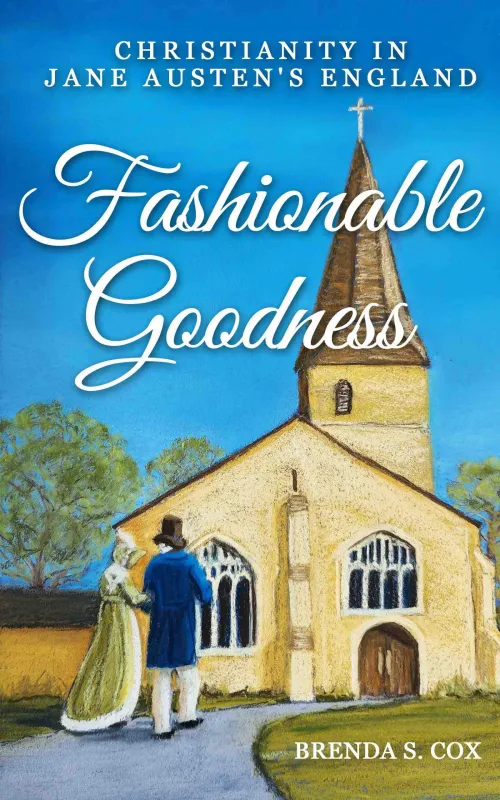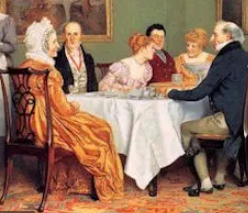Since the 18th century, satirists have had a fun time mocking dandies. In Hogarth to Cruickshank: social change in graphic satire, 1967, (Walker Publishing) Mary Dorothy George classified 3 different kinds of print-shop dandies: 1.) the notorious dandy, 2) the effeminate dandy, and 3) dandies who were slavish in their imitation of Beau Brummel.

Buckskin breeches, clawhammer coat, and riding boots. This ensemble from the Kyoto Costume Institute could well have been worn by Mr. Darcy as he toured the grounds of Pemberley.
I would add to those categories two more distinctions: the powerful dandy and the ridiculous dandy, or one who, from behavior or social standing, is a wholly ridiculous and insignificant creature. The latter exquisites, along with the slavish imitators and effeminate dandies, were fodder for cartoonists, especially Robert and Isaac Cruikshank, who took great glee in lampooning them in a series of hand colored engravings.
According to Jane Rendell in a Pursuit of Pleasure, the word dandy may have originated from “jack-a-dandy”, a Scottish description of a person dressing up at a fair. The word dates back to the late 18th century/early 19th centuries. In the Dictionary of the Vulgar Tongue, published in 1788, Francis Grose describes the dandy:
Dandy. That’s the dandy; i.e. the ton, the clever thing
Dandy. grey Russet. A dirty brown. His coat’s dandy grey russet the colour of the Devil’s nutting bag.
Dandy. Prat. An insignificant or trifling fellow.
Much later, the word “dandy” is used to describe “Satinist” – Obs. rare”1, [f. Satin sb. + -ist.] A wearer of satin, a dandy. A new English dictionary on historical principles: founded mainly on the materials collected by the Philological Society, Volume 8, Part 2, 1914.
Beau Brummel’s influence in modifying men’s behavior and dress ranged far and wide, influencing the Prince Regent and his set.

Prinny’s set, or the Prince Regent’s friends, consisted of the Earl of Sefton, the Duke of Devonshire, Lord Manners, “Poodle” Bing, and the Duke of Beaufort, serious dandies all. Somber and rich, these men epitomized the powerful, restrained dandy. Image @The Georgian Index
In Jane Austen and Representations of Regency England, Issue 33; Issue 61, Roger Sales identifies Henry Crawford and Tom Bertram of Mansfield Park as dandies: Tom because he is the quintessential Regency sports man, as well as rich and handsome; Henry, because of his mode of address, which shows a haughty attitude towards rural workers, and because he fashions his conversation “into exquisity little mirrors to reflect his own sense of superiority.” Henry makes elegant bows and frequently mocks others. His manners, like Beau Brummel’s, verge frequently on insolence – his stance is one of ennui and superiority at the same time. While Henry is not as handsome as Tom, he commands a room with his personality. I would classify Tom and Henry as notorious dandies, for both pushed the limits of what was considered proper behavior. The more modest Edmund Bertram would never behave like either man.
John Thorpe of Northanger Abbey belongs in the category of the ridiculous dandy. He drives a gig, but imagines it to rival a phaeton, which is like comparing a toyota corrolla to a sleek jaguar. John uses cant, and one imagines that his clothes are too loud and his shirt points too high.
As for Mr. Darcy, his looks and dress are effortlessly elegant. He doesn’t try to impress; he simply is a superior man. His arrogance, which Elizabeth Bennet found so off putting at first, comes naturally, for he is placed securely high in society. His inheritance and the cares, responsibilities and duties that great wealth bring exemplify the qualities of a gentleman who is a cut above the rest. Beau Brummel, I imagine, would have found very little fault with Mr. Darcy.

Two dandies by Cruikshank dresssed to the nines. While exquisitely rigged out, they take tea in a mean hovel of a room. Note the ragged curtains and table cloth, the dishes on the floor and the wash hanging on the line overhead.
While the term dandy has come to mean many things, among my favorite cartoons of the Regency era are those that make sport of them. These caricatures must have been popular then, and are irresistible to view now.













The more things change, the more they stay the same!
There is nothing quite so bad as having loud clothes and overly high shirt points! ;)
As to movie dandies, I love the over the top Leslie Howard and Nigel Bruce in the Scarlet Pimpernel and the sauve, understated Jeremy Northam in Emma.
Interesting. I look forward to some of the visitors here pointing out the dandies of our age (clearly not primarily in dress, which is sacrificed on the altar of blue jeans), and to pin them securely to the slide.
Perhaps I might suggest that one aspect is the worship of fancy autos. Any others?
Sacrificed on the altar of blue jeans. Ha! Love that one. I believe I will use that phrase, if I may!
Great post, Vic. After reading many of Heyer’s novels, I’ve come to realize that ‘dandy’ was not always a negative term, but had many connotations, as you have pointed out.
I nominate Johnny Depp. He’s quite the dandy.
Reminds me of most of the actors in Hollywood, and ALL of the B-list denizens of the “talent” judging panels.
A picture of a dandy comes to mind in the old movie version of “Great Expectations” when Pip (John Mills) shows up in London for the first time with his HUGE bow under his chin and learns how to be a gentleman from his friend, Pocket (Alec Guiness). The scene is just like a Cruikshank cartoon…
Transcribed verbatim from: en.wikipedia.org/wiki/Dandyism
“A dandy (also known as a beau or gallant) is a man who places particular importance upon physical appearance, refined language, and leisurely hobbies, pursued with the appearance of nonchalance in a cult of Self. Historically, especially in late 18th- and early 19th-century Britain, a dandy, who was self-made, often strove to imitate an aristocratic lifestyle despite coming from a middle-class background.
Though previous manifestations, of Alcibiades, and of the petit-maître and the muscadin have been noted by John C. Prevost, the modern practice of dandyism first appeared in the revolutionary 1790s, both in London and in Paris. The dandy cultivated skeptical reserve, yet to such extremes that the novelist George Meredith, himself no dandy, once defined “cynicism” as “intellectual dandyism”; nevertheless, the Scarlet Pimpernel is one of the great dandies of literature. Some took a more benign view; Thomas Carlyle in his book Sartor Resartus, wrote that a dandy was no more than “a clothes-wearing man”. Honoré de Balzac introduced the perfectly worldly and unmoved Henri de Marsay in La fille aux yeux d’or (1835), a part of La Comédie Humaine, who fulfills at first the model of a perfect dandy, until an obsessive love-pursuit unravels him in passionate and murderous jealousy.
Charles Baudelaire, in the later, “metaphysical” phase of dandyism defined the dandy as one who elevates æsthetics to a living religion, that the dandy’s mere existence reproaches the responsible citizen of the middle class: “Dandyism in certain respects comes close to spirituality and to stoicism” and “These beings have no other status, but that of cultivating the idea of beauty in their own persons, of satisfying their passions, of feeling and thinking …. Contrary to what many thoughtless people seem to believe, dandyism is not even an excessive delight in clothes and material elegance. For the perfect dandy, these things are no more than the symbol of the aristocratic superiority of his mind.”
The linkage of clothing with political protest had become a particularly English characteristic during the 18th century. Given these connotations, dandyism can be seen as a political protestation against the rise of levelling egalitarian principles, often including nostalgic adherence to feudal or pre-industrial values, such as the ideals of “the perfect gentleman” or “the autonomous aristocrat”, though paradoxically, the dandy required an audience, as Susann Schmid observed in examining the “successfully marketed lives” of Oscar Wilde and Lord Byron, who exemplify the dandy’s roles in the public sphere, both as writers and as personae providing sources of gossip and scandal.”
What a great post Vic, I thoroughly enjoyed it. I do agree, there are many dandies of our age and most of them are not celebrities. One only has to take a look at men’s “street style” blogs and forums to find them.
I have to admit, if a man came walking down the street wearing the ensemble from the Kyoto Costume Institute I would STILL swoon.
What a fascinating and well-researched article. I particularly like the way you have illustrated the different types of dandy with fictional characters that we know so well.
Ah, the good old days, when men were men ;)
Loved your post. I totally love the Regency culture stuff.
Just to point out that the pants were so tight that everything showed! I remember reading a quote where the women were very disappointed when the mens fashions changed to a more comfortable style. I can’t remember where I read this though, so I am unable to cite it. I remember it though, becuase I was thinking of today’s skinny jeans.
Reblogged this on Ella Quinn ~ Author and commented:
From Jane Austen’s Blog
This is wonderful.
This is interesting and the way things haven’t changed. Although could you imagine the men from them seeing the men and boys running around with their pants dropping down enough to show half if not all their rears?